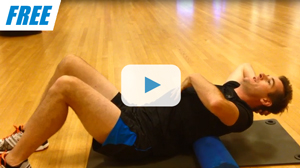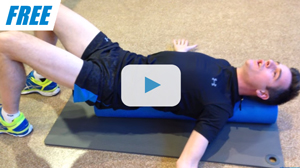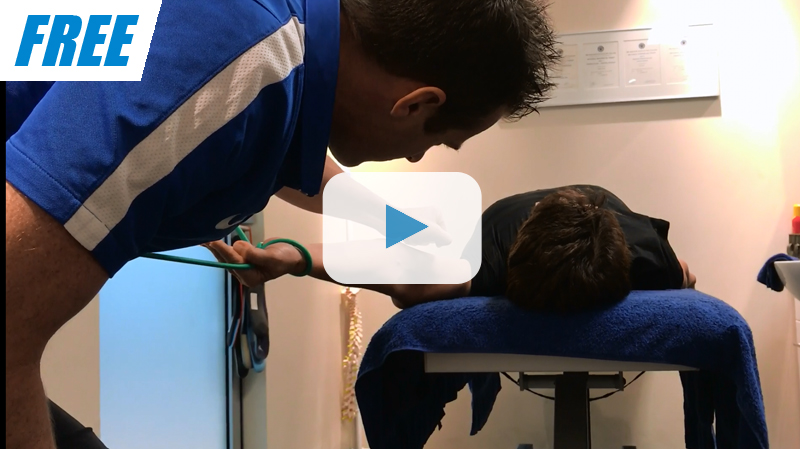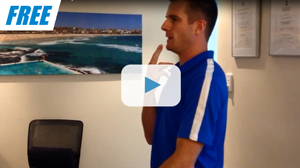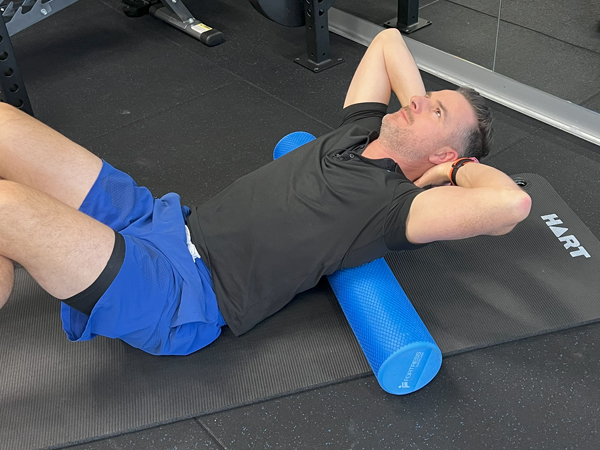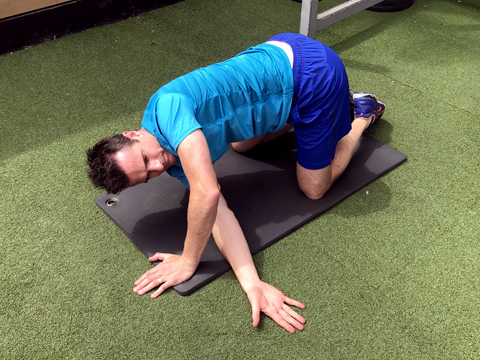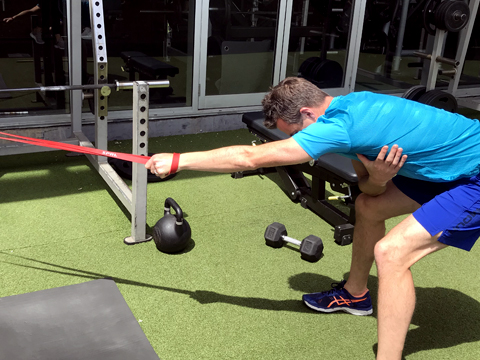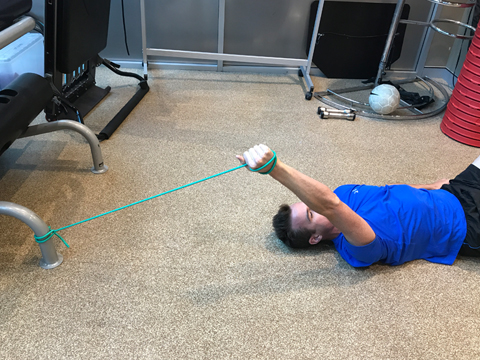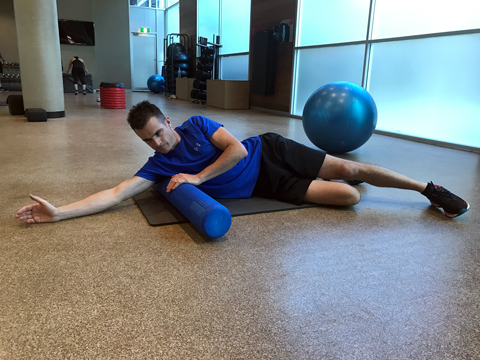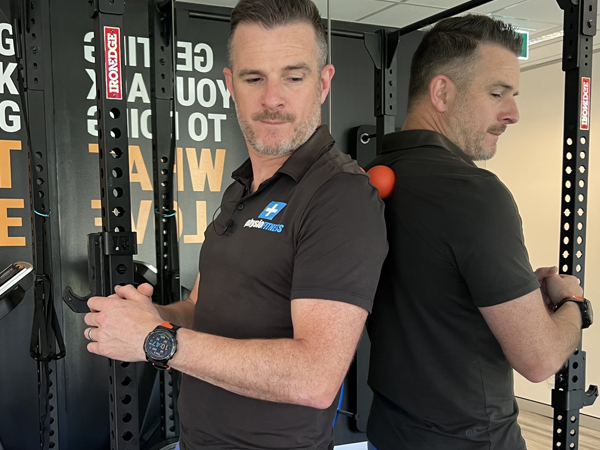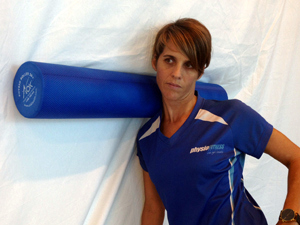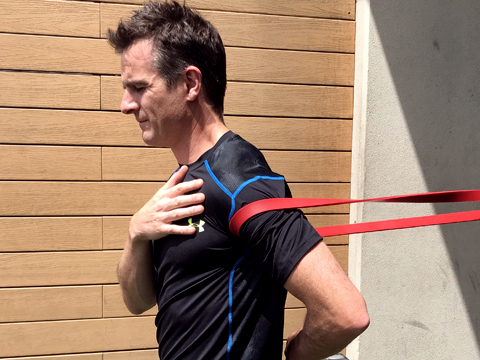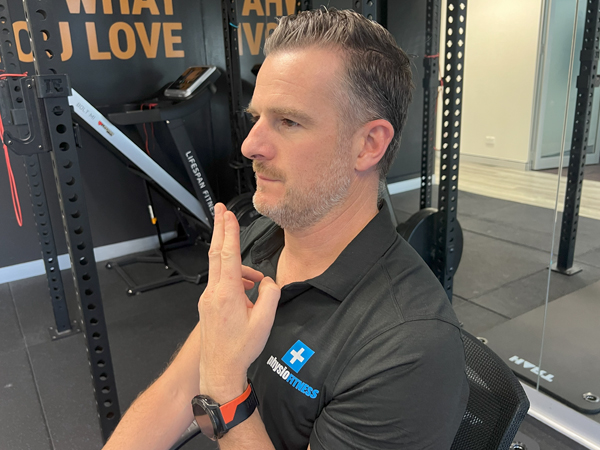Shoulder and Thoracic Spine Mobility | Weeks 01-03

PROGRAM STAGE PRE-REQUISITESTo enter this program you must:
1) Have no or minimal pain and/or symptoms that are not constant in your thoracic spine, shoulder blade (scapula), shoulder joint, neck or brachial plexus nerve distribution; 2) Consult your Physiotherapist and/or Physician before you commence this program if you have constant pain, inflammation or an injury that is undiagnosed, and; 3) Have no pain referral into the shoulder, back or arm(s), no pins and needles (parathesiae) in the arms or hand(s), and no numbness (anaesthesiae) in the upper limb(s). |
Program InstructionsYou are entering the first of 3 stages in this 8 week program for mobility of the Shoulder and Thoracic Spine. This program also includes some cervical spine (neck) exercises and neural tension exercises to complement the mobility of the shoulder and scapula. Throughout each week you will undertake essential mobility exercises that will progress in each stage, helping to improve your general mobility, function and movement. With each stage, there are two sets of mobility exercises to complete.
For this stage in Set A, there are 8 stretching and mobility exercises which focus firstly on the Thoracic spine and shoulder mobility. It is important that these main areas are worked on first in the workout, targeting major muscle groups and spinal movement. This will help create a foundation for increasing mobility in the prioritised areas, namely the shoulder and t-spine. All the foam roller, trigger point ball work is reserved for Set B, which can be done on an alternate day. Set B covers targeted mobility in the soft tissues around the shoulder, scapular and t-spine, as well as working on the mobility of the neck and attaching muscles - as these are part of the shoulder and scapula mobility. With both Sets, do the exercises in order as displayed. In this stage, Set A starts with increasing thoracic extension and rotation. Extension is always a priority to enable better scapular movement and thus shoulder joint movement. The shoulder mobility exercises then begin with general range of movement without too much load or stretch. The eccentric flexion exercise will help above head movement without load. In Set B, the use of devices really help the release and mobility perpendicular and obliquely to the soft tissues that muscle stretching lengthways can't achieve. In these first 3 weeks the lats, posterior cuff, traps and rhomboids are worked on. Both Set A and Set B will progress in difficulty through the next stages along with introduction of new mobility exercises hitting different areas and progressing into the nitty-gritty of movement and mobility improvements that are needed. |
Special NotesDo NOT aim to do both Set A and Set B on one day. You should alternate Set A and Set B each day, so you complete 5 sets across the week (in 7 days). With Set A three times per week and Set B two times per week - you will complete the week over 5 days with 2 days off. You can choose when to take the 2 days - it may depend on your other training, time constraints and work or life commitments. Tip: Don't do 5 days straight. Always break it up with a rest day in there somewhere.
This stage is 3 weeks, but if you are struggling for time each day and in the week, push it out further to 4 or 5 weeks if need be. Don't attempt to do more than what is prescribed or try to do it all in less than 3 weeks. You need time for the tissues to adjust, and doing 8-9 stretches per day is a task in its own! |
